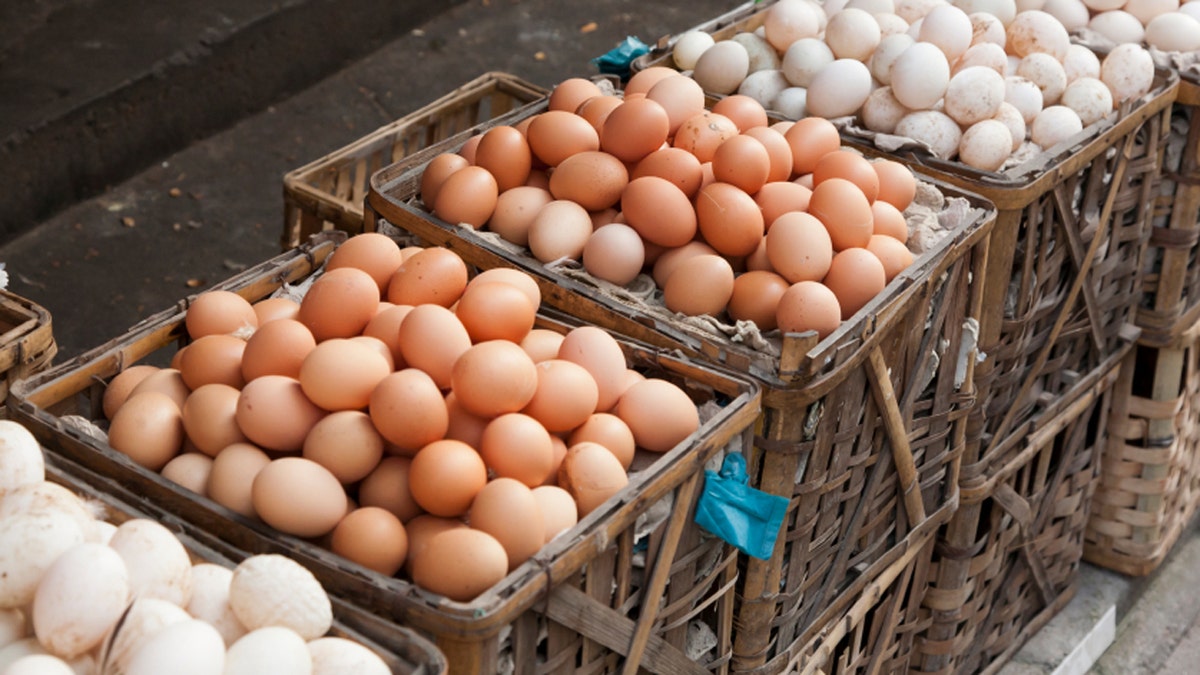Chicken eggs are one of the most commonly eaten foods on the planet, and also one of the most versatile.
They can be fried, poached, hard-boiled, deviled, coddled, shirred, or scrambled, and are incorporated, both cooked and raw, into thousands of recipes. They’re the glue that holds much of the food we eat together, from brownies to meatloaf, and on top of all that, they’re delicious and nutritious. But we bet that there are some things that you didn’t know about the incredibly versatile egg.
Egg consumption statistics are mind-boggling. Every year, more than 6.6 billion dozen eggs (more than 79 billion in total) are produced in the United States, and the U.S. Department of Agriculture predicts that each American eats about 255 eggs per year — which is actually down from the 1950s, when annual egg consumption was around 400 per person.
There are about 280 million egg-laying chickens in the U.S., and egg farms even have their own advocacy groups, among them the Iowa Egg Council, the Virginia Egg Council, and the New England Brown Egg Council.
Bird eggs have been a valuable food source since prehistoric times, and since then eggs have been an indispensable part of global cuisine, appearing in everything from Middle Eastern shakshuka to Taiwanese oyster omelettes, from Mexican huevos rancheros to Iranian baghali ghatogh, from Italian frittatas to British kedgeree, and from Jewish matzo brei to Japanese okonomiyaki.
Their uses really are infinite.
Read on to learn a whole bunch of things you most likely didn’t know about chicken eggs, from what the top egg-producing state is to what the name of that little white squiggly thing inside every raw egg is.
Eggs are one of those foods that you either love or hate — some people gag at the smell of them, and others eat one for breakfast every day, like Abraham Lincoln did (fun fact) — but you have to admit, eggs are one of the most indispensable foods in existence.
1. Iowa is America's Top Egg-Producing State

(iStock)
Nearly 15 billion eggs are produced in Iowa every year, with the egg industry employing about 8,000 workers. Other top egg-producing states include Ohio, Indiana, and Pennsylvania.
2. The Most Common Breed of Egg-Laying Chicken is the White Leghorn

(iStock)
The breed was first imported to America in 1828 from the Italian port city of Livorno; leghorn is an anglicization of the city's name. (Fans of the old Loony Tunes and Merrie Melodies cartoons may remember the strutting, stentorian rooster Foghorn J. Leghorn.)
3. Only 1.8 Percent of Eggs are Laid in Organic Conditions

(iStock)
We all want to eat more organic foods, presumably, but in fact a very small percentage of eggs are produced in accordance with the USDA National Organic Program standards, and these eggs cost about twice as much as standard eggs. In order to be certified organic, the hens can’t be treated with any hormones or antibiotics, and their feed can’t contain any genetically modified ingredients or any ingredients treated with pesticides or herbicides, and can’t be grown with fertilizers that contain chemical or synthetic additives.
4. One Leghorn Produces About 280 Eggs Per Year

(iStock)
Leghorns are lightweight and mature quickly, and also don’t brood (sit on top of the eggs and behave threateningly toward all who approach), so they’re perfectly suited to egg production. Some produce up to 320 eggs per year. Hens start laying eggs at 19 weeks, and as they get older, the eggs grow in size; the largest eggs are called Jumbo (30 ounces per dozen), while the smallest are called pee-wee (15 ounces per dozen).
5. They’re Loaded with Vitamins and Minerals

Fresh boiled eggs on marble background (iStock)
While they may be high in cholesterol, eggs are a lot more than just that and protein. They also contain antioxidants that help with eye health (lutein and zeaxanthin), vitamins A, B12, D, riboflavin, folate, and phosphorous, and an essential nutrient called choline, which helps with brain function.
Check out more incredible, edible eggs facts.
More from The Daily Meal
How to Hard Boil Eggs — and Peel Them — Perfectly Every Time
11 Ways You’re Cooking Eggs All Wrong
